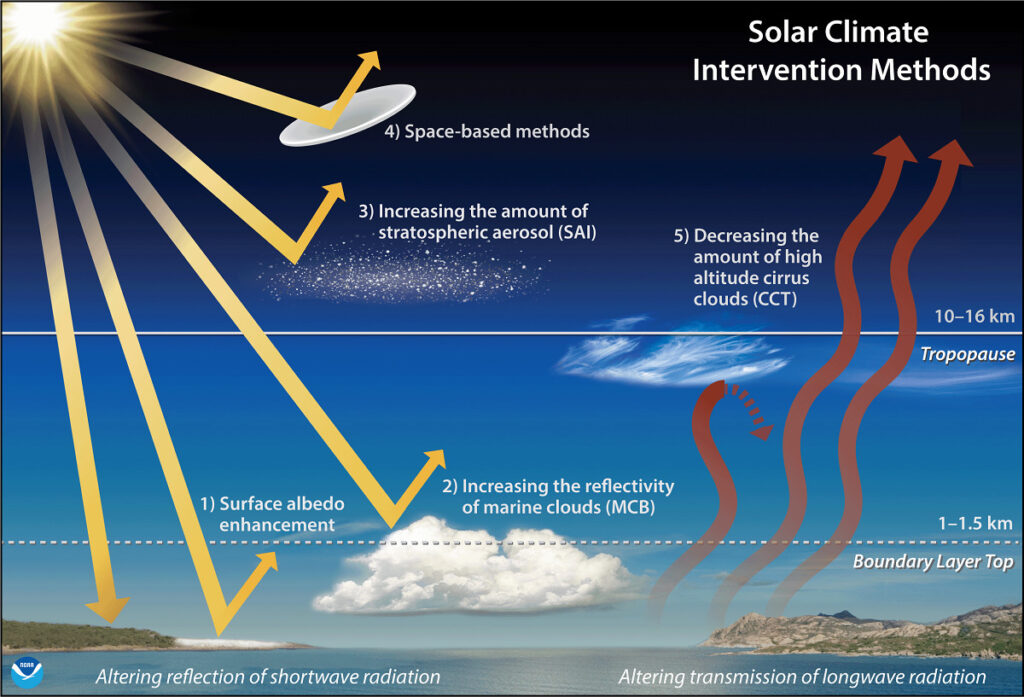Global warming, a critical environmental concern, is being tackled through various approaches, including reducing greenhouse gas emissions. However, recent scientific studies have highlighted the role of the Sun’s intense heat in exacerbating this issue. As a result, researchers have begun exploring innovative methods to shield the Earth from the Sun’s rays as a potential solution.
Solar radiation modification (SRM) also known as solar geoengineering, or Solar shielding strategies involve blocking or reflecting a portion of the sun’s radiation before it reaches the Earth’s surface, and have emerged as a promising avenue. There are various Solar radiation modification methods, such as stratospheric aerosol injection (SAI), marine cloud brightening, and cirrus cloud thinning, that aim to combat global warming by reducing Earth’s exposure to solar radiation.
Stratospheric Aerosol Injection (SAI)
SAI involves releasing tiny aerosol particles into the stratosphere to create a reflective shield, scattering and reflecting some of the Sun’s rays back into space. This approach shows potential for reducing the amount of heat absorbed by the Earth’s surface. However, further research is necessary to assess long-term ecological impacts and potential unintended consequences.
Marine Cloud Brightening
Marine Cloud Brightening seeks to increase cloud cover by introducing cloud condensation nuclei, which make clouds denser and more reflective. This technique aims to reduce the penetration of solar radiation, cooling the Earth’s surface and mitigating global warming. However, extensive studies are required to evaluate the broader environmental and climatic effects of manipulating cloud cover.
Cirrus Cloud Thinning
Cirrus Cloud Thinning focuses on selectively reducing the density of high-altitude clouds, allowing them to become more transparent. By increasing their reflectivity, more sunlight is redirected back into space, counteracting the warming effect caused by solar radiation. Careful research and evaluation are necessary to determine optimal conditions and potential impacts on weather patterns.
Ensuring Safety and Effectiveness
Innovative SRM methods like SAI, Marine Cloud Brightening, and Cirrus Cloud Thinning offer promising avenues to combat global warming. However, comprehensive research, stakeholder collaboration, and careful evaluation of their safety, effectiveness, and long-term consequences are essential for responsible implementation and a sustainable future.

